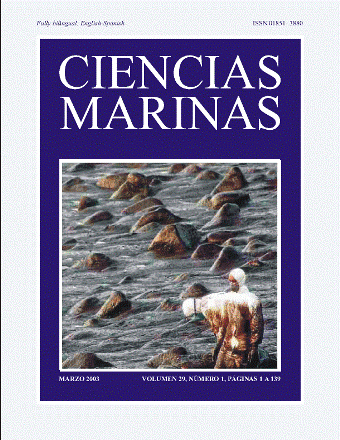Formation of the thermohaline structure of water in the Bahía de La Paz from summer to autumn
Main Article Content
Abstract
The summer-autumn formation of the thermohaline structure of the coastal deepwater body was studied in Bahía de La Paz, Gulf of California, from measurements the thermohaline variables taken in October 1997, November 1998, August 1999, and in an adjacent area of the Gulf of California in July 1997. In August 1999, intense density stratification was recorded from the surface to 60-m depth, because of a positive daily heat balance and weak vertical mixing. In autumn (Oct. 1997 and Nov. 1998), the upper mixed layer (ML) was 40–50-m thick, and the thermocline had a maximum vertical gradient up to 0.6ºC per meter. The three-dimensional distribution of density shows concave isopycnics towards the center of the bay, suggesting the possible existence of anticyclonic vorticity. The non-uniformity of this spatial mass field was formed by local heating and evaporation processes, and by the water exchange with the open ocean through the mouths of the bay. The physical reasons for the variations in the ML are discussed. The deepwater body (>150 m) maintained almost constant thermohaline variables during the study and no noticeable variations were detected in the surface layer. The T-S diagrams were different from those of the Gulf of California water mass and similar to Subtropical Subsurface waters ones (less saline). In October 1997, a 2.5ºC increase in temperature was measured at the surface layer which considered related to the peak of the 1997 El Niño.
Downloads
Article Details
This is an open access article distributed under a Creative Commons Attribution 4.0 License, which allows you to share and adapt the work, as long as you give appropriate credit to the original author(s) and the source, provide a link to the Creative Commons license, and indicate if changes were made. Figures, tables and other elements in the article are included in the article’s CC BY 4.0 license, unless otherwise indicated. The journal title is protected by copyrights and not subject to this license. Full license deed can be viewed here.

